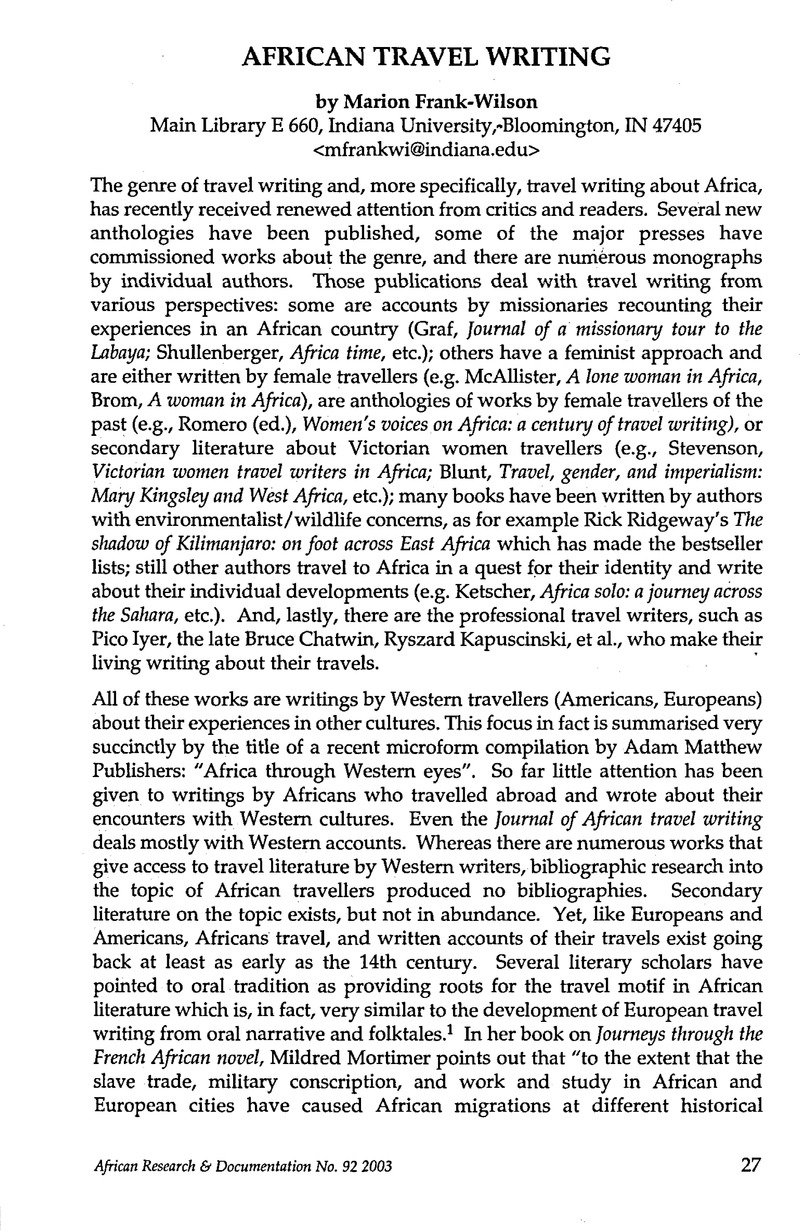South Africa has experienced an increase in contact with the rest of the African continent since the end of apartheid: there has been an upsurge in migration to South Africa, and, on the other hand, South Africans travel north. One of the results of this renewed interest in Africa is “
the emergence of a new stream of travel writings.” (Jonathan Crush,
Tijdschrift voor Economische en Sociale Geografie, vol
91, no.
4,
2000, p.
438). One of the characteristics of this new kind of South African travel writing is that its authors seek to explain and represent the African continent to their fellow South Africans. This distinguishes it from travel writing from other parts of Africa, and it consequently is listed under a separate heading.
Google Scholar